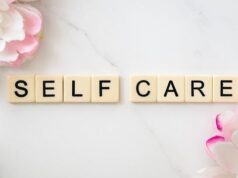In the intricate dance of communication, the phrase “I want you” often carries weighty implications and can evoke a myriad of responses depending on the context. Whether it emerges in the warmth of a romantic overture, the urgency of a professional request, or the longing of a friend, understanding how to respond thoughtfully can significantly shape the dynamics of the interaction. This article delves into the art of acknowledging such a declaration, providing insights on how to decipher the underlying intentions and craft a suitable reply. From affirming feelings to navigating boundaries, we will explore varied approaches to ensure your response resonates with sincerity and clarity.
Understanding the Context Behind the Statement
When someone expresses a desire with the phrase “I want you,” it’s essential to consider the underlying context that shapes this statement. This phrase can carry different meanings depending on the situation, the tone of voice, and the relationship dynamics at play. In some instances, it may signal a romantic or physical attraction, while in others, it could reflect a deeper need for emotional connection or reassurance. Understanding these nuances is crucial, as it helps in crafting a response that is both appropriate and considerate. Some key aspects to consider include:
- Intention: Is the person seeking a romantic involvement, or could they be expressing a desire for companionship?
- Setting: Consider whether the statement was made in a casual environment or a more intimate context, as this can influence its meaning.
- Relationship: Analyze the nature of your relationship with the person making the statement; familiarity can change the implications significantly.
Once you’ve assessed the context, your response can be tailored to acknowledge their feelings while maintaining clarity about your own intentions. Responding thoughtlessly may lead to misunderstandings, so consider expressing your thoughts openly. Whether you are flattered, confused, or cautious, it’s important to communicate your feelings transparently. A few effective strategies include:
- Clarifying: If unsure, ask open-ended questions to understand their feelings better.
- Expressing feelings: Share your emotions honestly, whether they align with or contrast theirs.
- Setting boundaries: If needed, communicate your comfort levels clearly, ensuring that both parties feel respected.
Analyzing the Intent: Desire or Seriousness
When confronted with the phrase “I want you,” it becomes essential to discern the underlying intent behind the declaration. Is it a spontaneous expression of newfound attraction, or is it rooted in deeper emotional currents? To help clarify, consider the following factors:
- Context: The circumstances surrounding the statement can provide critical insight. Was it said during a playful moment, or is it part of a serious discussion about feelings?
- Body Language: Non-verbal cues such as eye contact, posture, and enthusiasm can reveal the speaker’s earnestness and level of desire.
- Previous Interactions: Reflecting on your past conversations and behaviors can provide a broader understanding of their feelings.
Once the intent is analyzed, your response should align with the level of seriousness implied in their words. A light-hearted reply can maintain the playful tone if the statement feels whimsical. Conversely, if the expression suggests a strong emotional desire, a thoughtful and sincere acknowledgment is warranted. Consider these approaches:
- Reflect their tone: Match their level of seriousness or playfulness to validate their feelings.
- Ask clarifying questions: Invite them to share more about what they mean, which can also deepen the conversation.
- Provide your feelings: Be honest about your emotions to foster open communication and connection.
Recognizing Your Feelings in Response
When someone expresses a desire for you with “I want you,” it’s important to take a moment to reflect on your own feelings and responses. Recognizing your emotions in this situation can help you navigate the complexity of interpersonal dynamics. Consider how this statement resonates with your sense of self and your relationship with the person. Ask yourself:
- What emotions arise in response? Are you feeling flattered, anxious, confused, or even overwhelmed?
- What context surrounds this declaration? Understanding the circumstances can clarify whether this is something you are open to exploring.
Your reaction may vary based on personal boundaries and past experiences. Be attuned to your body’s signals and mental state; these can provide valuable insights into what the statement means for you personally. For instance, if you feel excitement or joy at the prospect, it may signal readiness for deeper engagement. Conversely, if you detect discomfort or hesitation, it’s essential to honor those feelings. Take the time to sort through these responses, as they will inform how you choose to engage with the other person:
- Assess your comfort level: Are you on the same page emotionally?
- Communicate your feelings: Be open about your thoughts, whether they align with or diverge from the other person’s intentions.
Setting the Scene: Creating a Comfortable Environment
Creating a space that is both inviting and functional is key to fostering your creativity. Start by considering your furniture choices; opt for a chair that strikes the right balance between comfort and support, ensuring it encourages focus rather than inducing sleep. Add elements that spark joy and inspiration, such as personalized decorations, artwork, or a vision board. Don’t underestimate the importance of lighting: natural light is ideal, so set up near a window if possible, or invest in warm, adjustable lighting that maintains your energy as you write. Aromas can also play a role; consider incorporating scented candles or essential oils that promote concentration.
Your writing corner should be a personal retreat that minimizes distractions. To achieve this, establish a clutter-free zone where only the essentials are present. Use organizers for your materials, ensuring everything has its place. Incorporate technology wisely; while devices can enhance productivity, they can also become sources of distraction. Consider using applications or tools that help you stay focused, such as timers or writing apps that block distractions. Additionally, make sure to personalize your space with reminders of your goals—this could be sticky notes with motivational quotes or a calendar with milestones marked—keeping your aspirations ahead of you as you delve into your work.
Crafting Your Response: Confidence is Key
When someone expresses, “I want you,” it can evoke a range of emotions and reactions. The key to responding lies in the essence of your feelings and intentions. Embrace the moment with clarity and confidence. Think about what this statement means to you and how it aligns with your own desires. Reflect on your feelings and consider what you want to convey in return. A strong response should be authentic and true to your feelings, whether it involves openness, curiosity, or even hesitation.
As you formulate your thoughts, consider the following points to structure your response effectively:
- Be Honest: Share your genuine feelings. If you’re excited, express it! If you’re uncertain, it’s okay to voice that too.
- Ask Questions: Inquire about their intentions or feelings to clarify what they mean.
- Use Positive Language: Frame your response positively to set a constructive tone for the conversation.
Ultimately, conveying your thoughts with confidence will not only enhance your communication but also strengthen the connection between you and the person expressing their feelings.
Balancing Honesty and Sensitivity
Responding to expressions of desire, such as “I want you,” requires a delicate balance between being honest and being sensitive. When someone conveys their feelings in this way, it can set the stage for meaningful dialog or, if mishandled, lead to misunderstandings. To navigate these moments effectively, consider the following:
- Reflect on Your Feelings: Before responding, take a moment to assess your own emotions. Are you excited, indifferent, or hesitant? Your true feelings will inform your response.
- Choose Your Words Wisely: Framing your response with care can prevent unnecessary hurt. Aim for honesty, but temper it with kindness to ensure that your reply respects the other person’s emotions.
It’s important to acknowledge the courage it takes to express such feelings. Therefore, responding with empathy can foster a deeper connection. Think about how you might convey your message while softening any potential sting:
- Communicate Clearly: If you reciprocate their feelings, don’t hesitate to express that enthusiasm. If your feelings differ, frame your response to soften the impact. For example, expressing gratitude for their honesty while sharing your perspective can help maintain mutual respect.
- Encourage Open Dialogue: Let them know that you value their feelings and are open to discussing them further. This openness not only validates their honesty but strengthens the relationship, promoting trust and understanding.
Exploring Possible Outcomes of Your Reaction
Your reaction to a bold statement like “I want you” can lead to various outcomes, each influenced by your emotions, personality, and the context of your relationship with the person. For instance, a confident and playful reply can set a flirtatious tone, encouraging further engagement. Alternatively, a cautious response may reflect a desire to establish boundaries or clarify intentions before diving deeper into the conversation. Understanding these dynamics can help you navigate your emotions and the possible implications of your response.
When considering how to reply, think about the following factors that could shape the interaction:
- Intentions: Are you interested in exploring the possibility of a relationship, or do you prefer to keep things light and casual?
- Comfort Level: How comfortable do you feel with the other person? Does their tone match yours?
- Future Implications: How might your reaction influence your relationship long-term? Will it lead to more meaningful conversations or complicate the current dynamic?
The path you choose can affect not just the immediate conversation, but also how both parties view the potential for connection moving forward.
Addressing Boundaries: What Are You Comfortable With
Understanding your comfort levels is crucial when navigating intimate situations. Recognizing what you are comfortable with allows you to communicate your needs clearly. Consider reflecting on the following aspects:
- Physical Boundaries: What level of physical closeness feels right for you? Think about how much personal space you require.
- Emotional Boundaries: Are you open to sharing feelings and vulnerabilities, or do you prefer to keep certain emotions private?
- Consent: Consider how important consent is for you in various situations. Ensure that your partner respects your need for agreement.
Once you have an understanding of your comfort levels, it is essential to express these clearly and assertively. Avoid ambiguity and be direct about your needs to ensure mutual respect. You might use phrases like:
- I am comfortable with this aspect, but I need to set limits on that.
- It’s important for me to take things slow and discuss boundaries.
- Let’s make sure we’re both on the same page before moving forward.
Communicating Clearly Without Ambiguity
Responding to a statement like “I want you” can evoke a variety of emotions and interpretations. To communicate effectively in this context, clarity is essential. Start by acknowledging the statement without jumping to conclusions. You might say, “I appreciate your feelings,” which opens a constructive dialog. Then, consider asking open-ended questions to gauge the other person’s intentions, such as “What does that mean for you?” or “How do you envision us moving forward?” This approach ensures that both parties understand each other better, reducing the risk of misunderstanding or miscommunication.
It’s also beneficial to express your own thoughts and boundaries clearly. Share your perspective honestly by stating your feelings and expectations. For instance, you might respond with, “I’m flattered by your interest, but I think it’s important to discuss our goals and compatibility.” This not only demonstrates your assertiveness but also fosters a respectful exchange of feelings. Remember, effective communication is a two-way street; it includes both understanding the other person and expressing your own views succinctly.
Navigating Changes in Relationship Dynamics
When faced with the phrase “I want you,” it often marks a significant shift in relationship dynamics, inviting a deeper level of connection and vulnerability. It’s essential to recognize that such declarations can bring a mix of emotions—excitement, fear, or uncertainty. Approaching this moment involves a combination of honesty and self-reflection. Consider your own feelings and intentions: Do you echo that desire? Are you prepared for the potential implications of this relationship shift? Taking the time to process your thoughts can help you respond in a manner that is authentic and considerate.
Moving forward, communication is key to navigating these changes effectively. Responding with clarity can help establish a safe space for both partners to explore their feelings. You might say things like:
- “I appreciate your honesty and I feel similarly.”
- “This is a big step; let’s talk about what it means for us.”
- “I need some time to think about this; can we revisit this conversation later?”
Such responses promote mutual understanding and respect, ensuring that both individuals can articulate their needs and concerns without feeling pressured. By fostering open dialog, you can navigate the complexities of evolving feelings, paving the way for a healthier and more fulfilling relationship.
Following Up: Maintaining Open Channels of Communication
Effective communication is essential for fostering connections, especially in situations where emotions are involved. When someone expresses a strong desire or need, such as “I want you,” maintaining open channels of communication is key to navigating the conversation. Start by actively listening to the other person’s feelings and intentions. Acknowledge their sentiment by validating their emotions, and then express your thoughts honestly. This two-way engagement can strengthen the mutual understanding and help clarify any expectations or boundaries.
To facilitate ongoing dialog, consider employing various communication methods. Utilize in-person discussions for more personal interactions, reserve emails for detailed thoughts, and use instant messaging for quick check-ins. By choosing the appropriate channel based on the context, you can ensure that your communication remains clear and effective. Additionally, encourage the other person to share their insights and feelings, creating a supportive environment where both parties feel empowered to communicate openly. This approach will not only enhance your interaction but also build a stronger foundation for future exchanges.
The Way Forward
As we wrap up our exploration of how to respond to the enticing declaration of “I want you,” remember that the key lies in understanding the context and your own feelings. Whether you choose to keep it playful or reciprocate with sincerity, your response can set the tone for the conversation and your evolving relationship. Embrace the moment and let your personality shine through your words. After all, communication is a dance—one that can lead to deeper connections, laughter, and perhaps a touch of romance. So, the next time you receive that bold message, take a breath, consider your options, and respond in a way that feels true to you. Your response could be the spark that ignites something beautiful.




